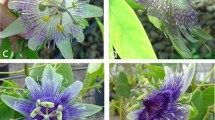Abstract
The lack of red-purple pigmentation in seedlings obtained from crosses between M. cv Baskatong, carrying a dominant homozygous gene for red-purple pigmentation, and other species has been used for the detection of apomictic plants in Malus species. RAPD marker techniques were employed to evaluate the genetic similarity between putative apomictic seedlings and their female parents. From the selected set of 20 (OPA) primers about half were able to detect hybrids from the apomictic seedlings, if present. RAPD analyses confirmed the usefulness of the colour-marker gene in detecting the hybrids in vitro for seedlings of M. toringoides×M. cv Baskatong, but not for crosses involving M. hupehensis×M. cv Baskatong where in vitro colour-based selection was not possible (due to red stems in all cases). The set of primers (OPA-01, 02, 08, 09, 10, 12, 13, 14, 16, 18 and 20) clearly determined the hybrid nature of seedlings and allowed the selection of apomictic ones. Therefore, although cv Baskatong is useful as an indicator, these data show that this technique is not applicable in all cases.
Similar content being viewed by others
Author information
Authors and Affiliations
Additional information
Received: 22 May 1997 / Accepted: 28 July 1997
Rights and permissions
About this article
Cite this article
Ur-Rahman, H., James, D., Hadonou, A. et al. The use of RAPD for verifying the apomictic status of seedlings of Malus species. Theor Appl Genet 95, 1080–1083 (1997). https://doi.org/10.1007/s001220050665
Issue Date:
DOI: https://doi.org/10.1007/s001220050665




